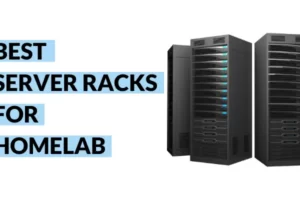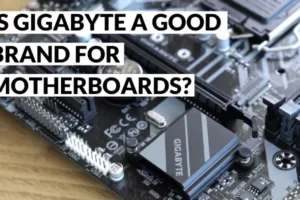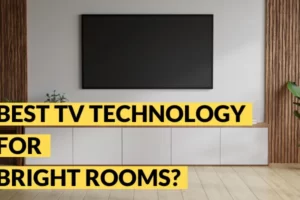Internet and its applications have infused our lives like a virus for a lack of using a better term.
And I am sure you are as aware of it as am, I am if not more.
You name any field of activity and production and it’s there.
Smart home devices as is the context of this post virtually base their existence and operation on network and the internet.
And because I have been receiving so many queries associated with smart home devices and their dependence on the internet, I figured why not dedicate a post for that.
Some of the most asked queries were associated with smart plugs and their operation.
So, in this article, let me cover different topics revolving around smart plugs, and their dependence of operation on the availability of the Internet.
After you have read the post completely you will have a fair idea on what to and what not to expect from smart devices, how they operate in a network and can some of them function without the need of internet.
So, sit tight and read on for a wealth of useful information. 😉
Do Smart Plugs Need Wi-fi?
So, let’s start this discussion keeping smart plugs in focus.
Can smart plugs work without the availability of an internet connection?
The answer is yes, Smart plugs do indeed need Wi-Fi or similar communication technology (Zigbee/Z-wave) to communicate with their app. But I sense the intent behind your question is also regarding whether smart plugs can operate without an internet connection. Without an internet connection, you will not have the option to remotely control your smart plug using Alexa, Google Assistant or Siri.
Similarly, other smart devices like the smart locks, smart thermostats and smoke alarms will still work in technical terms but they will be the trimmed off in their functionalities as smart devices without an active internet connection.
While there are other ways via which you can create a local network and initiate inter device data transmission via a hub but we will discuss that in the later part of this post.
So, What Are Smart Plugs?
While I realize most of the people reading this article, already know what smart plugs are, I think I still need to relay the definition of them for the few who don’t.
Smart plugs are quite like your normal socket outlets with the simple yet potent difference that you can remotely control them via an external entity, in most cases, an app on your smartphone.
So, you see the simplicity yet beauty about them.
- Important: Innr products connect directly to Zigbee compatible hubs, including Philips Hue*, SmartThings and Alexa devices with built-in smart hub. *Does not work with Apple Homekit, Hue Entertainment, Hue Secure.
- Smart control: With Innr's smart outlet plug zigbee plug you can connect all traditional lights to your Smart lighting system and switch on and off your appliances (max 10A / 1200W)
- Suitable for voice control: Pair the smart plugs with a compatible hub to activate complete Voice control with Alexa and Google Assistant devices. Innr plugs also work with built-in smart hub devices such as Amazon Echo 4th gen, Studio & Show 10.
- Compact design: The Compact design of this Zigbee repeater does not block off adjacent sockets, as the item dimensions are 1.89 x 1.89 x 2.05 inches (LxWxH)
- Works as a range extender: This Zigbee outlet Plug Uses mesh networking to increase the range of other Zigbee devices in your network that are further away from your hub.
You will be able to control your garage door from your bedroom or switch on or off any electrical appliance from a distance.
Simple yet potent aren’t they.
Installing and using them is even more simple.
Just plug one of these bad boys into any wall socket and plug in the appliance of your choice and voila.
You can now control your appliance using your smartphone.
And thus, the name smart plugs.
You can use them with a lamp, a TV or your coffee machine and enjoy increased control.
How Do Smart Plugs Work And Why Do You Need Them?
Well, if you are looking to really get into converting your home into a smart home,smart plugs are probably the most versatile building blocks that will get you there.
For instance, let say you want more security in your home.
Connecting a simple light into your smart plug basically converts it into a smart light and a potential security device.
That is because you can now schedule the lamp to turn on or off at a certain time and not just that you can even trigger it’s turning on or off using a motion sensor.
You see how these devices can be simple yet potent.
Let’s take another example, smart plugs can enhance your convenience as well.
For example, you can schedule your coffee machine to a time when you get up and your home will be ready with your coffee as soon as you enter the kitchen.
And let’s say you are cooking a slow cooked recipe in the evening you can initiate the crock pot whilst you leave work, thereby making you more effective and ready to dig in when you come back.
One another use case that I can think of is energy savings.
While I agree there is a long way to go, yet, people are slowly moving towards a conscious planet.
Smart home and devices can aid in that.
And save energy bills at the same time.
The examples can be many but from the top of my head you can automatically switch of your TV or cable box if they are in stand by mode for a long time.
You get the idea, now right?
The use cases can be many and I daresay will depend on how you wish to use them.
Share some use cases in the comments below.
How Do Smart Devices Communicate With Each Other?
Now that you know how smart plugs work lets extrapolate the understanding to other devices as well.
You see how simple I tend to make things.
The more complicated devices as far as communication is considered tend to work in the same way as a smart plug.
Of course, certain more complicated operations may happen but the essence remain essentially the same.
Do how do smart home devices communicate with each other and what is the role of internet in it?
The smart devices or more appropriately IoT devices use Wi-Fi to interface with the central wireless router linked to a modem connected with internet to update their firmware, store and share data via a common cloud.
Of course, this can also happen with the help of other technology like Bluetooth.
But in case of smart homes Wi-Fi holds an edge of faster data transmission across the network.
Another popular protocols that are increasingly being adopted in smart home technologies are Z-wave and Zigbee.
Their speciality is low power and relatively long ranged communication capable of including hundreds of devices under their umbrella.
There are also other options such as the Lightweight M2M but the hunt and search for better IoT communication channels is evolving and expanding by the day.
Can A Smart Home Work Without The Internet?
In order to understand this, let’s first learn why internet is important for a smart home or smart devices.
The smart devices use the internet to update their firmware very similar to what you phone does for software updates.
So, in order for your smart home to function properly, you need internet access in your Wi-Fi network.
Smart assistants like Alexa, Google Assistant or Siri are what they are because they use internet to access cloud to process voice, match, store and execute commands you give them.
And above all what makes smart home and devices so appealing is our ability to control them remotely.
Without an internet connection you won’t be able to do it.
So, as I mentioned previously with an active local connection you may be able control your smart gadgets when in the range of the protocol they may be using, but you lose the capacity of controlling them remotely altogether.
Now why would one try to operate smart devices like the smart plugs without the internet.
Well, one reason is many users fear that using too many devices may slow down their Wi-Fi and they want a separate network for it.
The fun part in the post was the method you can use to determine what data plan you would want to use.
Anyways, I don’t think the shift to operating a non-internet based smart home model is primarily because of that.
The big reason is, surprise, surprise PRIVACY.
Just the other day I came across this reddit post, where Alexa started speaking by her own at night.
Well, that’s just spooky and a bit funny if you think about it.
So a fear of privacy and a tendency to have more control using local processing systems is driving engineers to think of alternatives.
Enter Zigbee, Bluetooth And Z-wave tech.
All these wireless technologies is capable of running a localized smart home.
Let’s see how.
- Open this awesome read in a new tab: 10 Cool And Affordable Solar Powered Smart Gadgets For Your Smart Home!
Operating Smart Plugs Without An Internet Connection
While I will be using the example of smart plugs owing to the context of the post.
But I want you to understand that you can apply the discussed method to any smart devices that you wish to incorporate in the localized smart home.
So here are the things that you are going to need.
- WHAT’S IN THE BOX - Includes one Hue Bridge that unlocks the full potential of your Philips Hue system, including automations, smart control from anywhere in the world, and so much more.
- SECURE AND STABLE CONNECTION - With Zigbee advanced technology, Bridge ensures a reliable connection that won't put a strain on your Wi-Fi. Your Hue lights will work even when your Wi-Fi is down. Enjoy an instant response with no delays.
- CONTROL LIGHTS FROM ANYWHERE - Bridge enables out-of-home control. Control your lights with the Hue app anywhere you have an internet or cellular connection. Forgot to turn off your lights? Turn them off with the app, from anywhere in the world.
- ENJOY SMART LIGHTING FOR YOUR ENTIRE HOME, INDOORS AND OUT - With a Bridge you can add up to 50 lights and accessories to your smart lighting system. A Hue Bridge is required to control Hue outdoor lights and accessories.
- LEVEL UP YOUR MOVIES, MUSIC, AND GAMES WITH SURROUND LIGHTING - Make your lights dance, flash, dim and brighten along to your favorite movies, TV shows, PC and music. Hue entertainment sync requires a Hue HDMI Sync Box, sold separately.
- Important: Innr products connect directly to Zigbee compatible hubs, including Philips Hue*, SmartThings and Alexa devices with built-in smart hub. *Does not work with Apple Homekit, Hue Entertainment, Hue Secure.
- Smart control: With Innr's smart outlet plug zigbee plug you can connect all traditional lights to your Smart lighting system and switch on and off your appliances (max 10A / 1200W)
- Suitable for voice control: Pair the smart plugs with a compatible hub to activate complete Voice control with Alexa and Google Assistant devices. Innr plugs also work with built-in smart hub devices such as Amazon Echo 4th gen, Studio & Show 10.
- Compact design: The Compact design of this Zigbee repeater does not block off adjacent sockets, as the item dimensions are 1.89 x 1.89 x 2.05 inches (LxWxH)
- Works as a range extender: This Zigbee outlet Plug Uses mesh networking to increase the range of other Zigbee devices in your network that are further away from your hub.
So, What Exactly Are Smart Home Hubs?
- WHAT’S IN THE BOX - Includes one Hue Bridge that unlocks the full potential of your Philips Hue system, including automations, smart control from anywhere in the world, and so much more.
- SECURE AND STABLE CONNECTION - With Zigbee advanced technology, Bridge ensures a reliable connection that won't put a strain on your Wi-Fi. Your Hue lights will work even when your Wi-Fi is down. Enjoy an instant response with no delays.
- CONTROL LIGHTS FROM ANYWHERE - Bridge enables out-of-home control. Control your lights with the Hue app anywhere you have an internet or cellular connection. Forgot to turn off your lights? Turn them off with the app, from anywhere in the world.
- ENJOY SMART LIGHTING FOR YOUR ENTIRE HOME, INDOORS AND OUT - With a Bridge you can add up to 50 lights and accessories to your smart lighting system. A Hue Bridge is required to control Hue outdoor lights and accessories.
- LEVEL UP YOUR MOVIES, MUSIC, AND GAMES WITH SURROUND LIGHTING - Make your lights dance, flash, dim and brighten along to your favorite movies, TV shows, PC and music. Hue entertainment sync requires a Hue HDMI Sync Box, sold separately.
A Smart home hub is nothing but a central system or device to which all your smart devices will connect into to get controlled via a mesh network similar to Wi-Fi.
In other words, a smart home hub is a local brain to which all smart devices will be connected like limbs via channels dictated by Zigbee or Z-Wave.
Which brings us to the next question.
What Are Zigbee And Z-Wave?
While we have already discussed this let me reiterate it for formal definition.
Z-wave is a wireless communication protocol developed for home automation purposes primarily, to create a mesh network using low-energy radio waves.
Too techy?
Well, its just a replacement for Wi-Fi that helps you operate your smart devices without Wi-Fi.
Better?
Z-Wave is similar to Zigbee with the difference that Z-Wave operates at 908 Mhz whereas Zigbee operates at 2.4 Ghz.
While the 2.4 Ghz band allows Zigbee to transmit more data but it reduces the range of the signal.
Without Zigbee or Z-Wave capability in your smart plug you can’t possibly think of controlling them without the internet.
Once you create a home automation eco-system that may or may not have smart devices other than smart plugs, these are the advantages that you will have.
- An absolutely secure and controlled smart home free from threats of hacks from the outside.
- A geeky and much more advanced home automation system with custom features.
- No burden on your Wi-Fi and the fear of slowing down your internet when more smart devices are incorporated.
- No dependence on the internet.
- The capacity to connect smart devices from different brand come together.
So, what have we learnt?
We learnt today that smart plugs do indeed need some kind of wireless mechanism to work they can work without the internet minus the possibility of controlling them remotely.
By using smart plugs as a base, we learnt how smart devices communicate with each other and the cloud.
And finally, we had a basic entry level understanding into how you can actually control your smart devices without internet using protocols like Zigbee and devices like the smart hub.
If you have any other query around these topics and want to discuss them with me leave it into the comments section below.
And if my limited knowledge permits a valid answer, I will relay it.
Don’t forget to subscribe to the blog if you enjoyed your stay and I will see you in the next one.
Tada!





